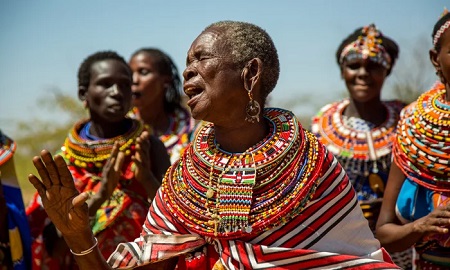Introduction
In the vibrant cultural tapestry of Latin America, the Ciulioneros stand out as a remarkable group dedicated to preserving their heritage while fostering community spirit. Originating from a blend of historical influences and contemporary practices, Ciulioneros embody the essence of cultural pride and resilience. This article delves into their origins, traditions, and the significance they hold within their communities.
Origins of the Ciulioneros
The term “Ciulioneros” has its roots in indigenous languages and reflects a long history of adaptation and evolution. Primarily associated with regions in Mexico and Central America, the Ciulioneros can trace their ancestry back to pre-Columbian civilizations. These communities traditionally engaged in agriculture, craftsmanship, and trade, laying the foundation for the rich cultural practices that define them today.
Over the centuries, the Ciulioneros have incorporated elements from Spanish colonial influences, creating a unique fusion of indigenous and European traditions. This blend is evident in their festivals, clothing, music, and culinary practices, making them a vital part of the cultural landscape in their respective regions.
Cultural Traditions and Practices
One of the hallmarks of the Ciulioneros is their commitment to preserving traditional practices. These include:
1. Festivals and Celebrations
Ciulioneros celebrate a variety of festivals that highlight their cultural heritage. One of the most significant is the Día de los Muertos (Day of the Dead), a vibrant celebration honoring deceased loved ones. Families create altars adorned with photographs, flowers, and favorite foods of the departed, fostering a connection between the living and the dead.
In addition to Día de los Muertos, Ciulioneros participate in local fiestas that incorporate traditional dances, music, and food. These events not only celebrate their heritage but also strengthen community bonds.
2. Art and Craftsmanship
Artisan craftsmanship is a defining characteristic of the Ciulio neros. Many members engage in traditional arts such as pottery, weaving, and woodworking, often using techniques passed down through generations. These crafts are not merely economic activities but are deeply intertwined with their identity and cultural expression.
For example, intricate textiles produced by Ciulio neros often feature patterns and colors that reflect their indigenous heritage. These creations are sought after for their beauty and cultural significance, serving as a reminder of the skills and traditions of their ancestors.
3. Culinary Heritage
The cuisine of the Ciulio neros is another vital aspect of their cultural identity. Drawing on indigenous ingredients like corn, beans, and peppers, they create dishes that celebrate their agricultural roots. Traditional recipes are often shared during family gatherings and festivals, reinforcing the importance of food as a means of connection.
Dishes such as tamales, mole, and pozole are staples in Ciulionero households, each with its own story and significance. Through food, the Ciulioneros maintain a strong link to their past while sharing their culture with others.
The Role of Ciulioneros in Modern Society
As globalization continues to impact traditional cultures worldwide, the Ciulioneros face both challenges and opportunities. On one hand, there is the risk of cultural erosion as younger generations are influenced by global trends. On the other hand, the Ciulioneros are actively working to adapt and promote their heritage in modern contexts.
1. Education and Awareness
Many Ciulioneros are involved in educational initiatives aimed at teaching younger generations about their cultural heritage. This includes workshops on traditional crafts, language classes, and community events that celebrate their history. By fostering a sense of pride and belonging, the Ciulioneros are ensuring that their traditions are passed down.
2. Cultural Tourism
Cultural tourism has emerged as a valuable avenue for the Ciulioneros to share their heritage with the world. By opening their communities to visitors, they not only generate income but also promote understanding and appreciation of their culture. Tours often include traditional cooking classes, artisan workshops, and participation in local festivals, offering an immersive experience for tourists.
Challenges Ahead
Despite their resilience, the Ciulio neros face several challenges in preserving their culture. One significant issue is the pressure of modernization, which can lead to the abandonment of traditional practices. Additionally, climate change poses a threat to their agricultural practices, impacting food security and livelihoods.
To address these challenges, the Ciulio neros are increasingly leveraging technology and social media to raise awareness about their culture. By sharing their stories online, they can reach a broader audience and foster a sense of global community around their heritage.
Conclusion
The Ciulioneros represent a vital link between the past and present, embodying the rich cultural heritage of Latin America. Through their festivals, crafts, and culinary traditions, they not only preserve their identity but also foster a sense of community and belonging. As they navigate the complexities of modern society, the Ciulioneros continue to stand as guardians of their culture, ensuring that future generations will inherit a rich legacy.
FAQ
Q: Who are the Ciulioneros?
A: The Ciulioneros are a cultural group primarily found in Mexico and Central America, dedicated to preserving their indigenous heritage through traditions, festivals, and craftsmanship.
Q: What is the significance of Día de los Muertos for the Ciulioneros?
A: Día de los Muertos is a significant celebration for the Ciulioneros, honoring deceased loved ones through altars, offerings, and communal gatherings, fostering a connection between the living and the dead.
Q: How do the Ciulioneros promote their culture today?
A: The Ciulioneros promote their culture through educational initiatives, participation in cultural tourism, and by leveraging technology and social media to share their heritage with a wider audience.
Q: What challenges do the Ciulioneros face?
A: The Ciulioneros face challenges such as modernization, climate change, and the potential erosion of their cultural practices. However, they are actively working to address these issues through various initiatives.
Q: How can I learn more about the Ciulioneros?
A: To learn more about the Ciulioneros, consider participating in cultural events, visiting communities, or exploring online resources that showcase their traditions and practices.
